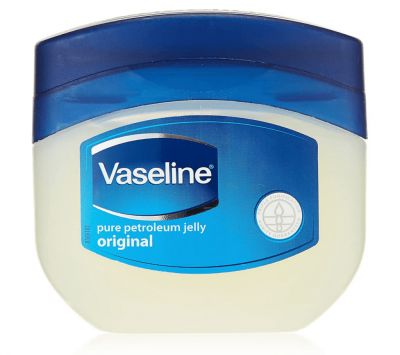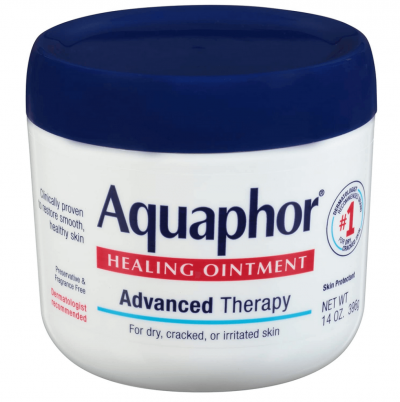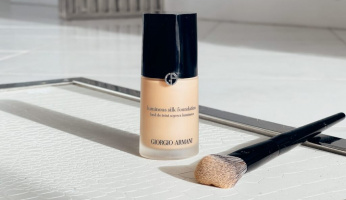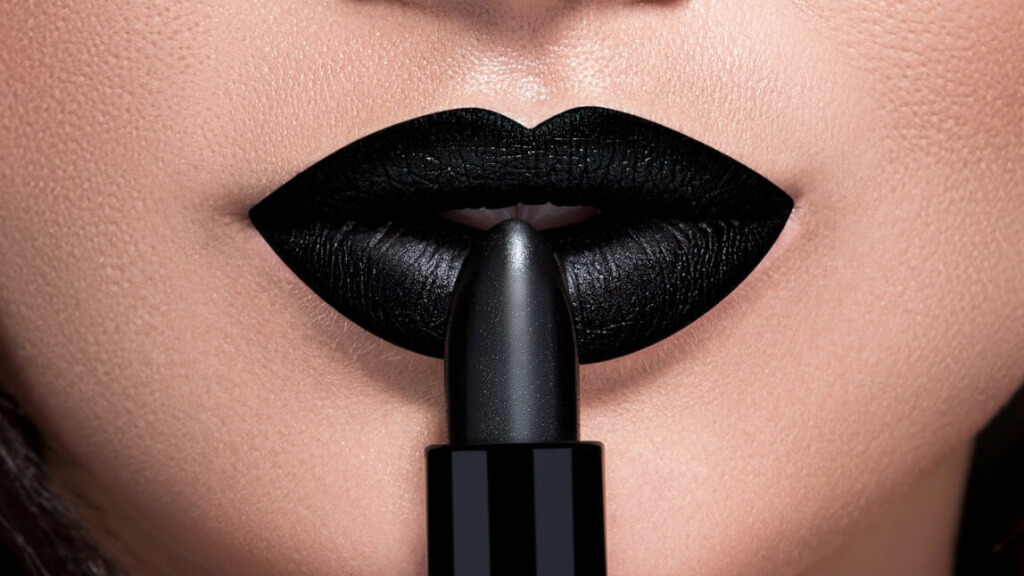Aquaphor vs. Vaseline: What is the Better Choice?
Many people use it as a moisturizer, lip product, protective agent, and more. But, if you know anything about Aquaphor, you know that it’s constantly being compared to Vaseline.
While any petroleum jelly-based product will have many similar uses, these two options aren’t as comparative as we may have thought.
Let’s dive into the difference between Aquaphor and Vaseline so you can make your decision on what products suits you best!
Aquaphor or Vaseline?
Vaseline is simple. The original Vaseline product that we all know and love is 100% petroleum jelly. No other ingredients, no water, just simply petroleum jelly.
Petroleum jelly is a thick paste that turns into a thinner consistency as it’s warmed between your hands. It creates a barrier on dry skin that helps to prevent water loss. For this exact reason, it’s also great to apply on scratched, burns, and wounds as it protects them from infection due to outside germs and bacteria.

While Vaseline can do many great things because it’s an occlusive jelly, it can also worsen some wounds. For example, Vaseline will enhance the symptoms. If you have a sunburn, Vaseline will seal in heat and moisture, preventing your sunburn from healing.
Although, Vaseline can help to treat minor cases of rosacea, eczema, psoriasis, dermatitis, diaper rashes, and more. So, there are many pros and cons to this well-loved all-encompassing product.
Aquaphor is not composed of the same ingredients. Aquaphor is only 41% petroleum jelly. This healing ointment contains mineral oil, ceresin, lanolin oil, panthenol, glycerin, and bisabolol. Many of these mineral components and ingredients are soothing to the skin and derived from animals or plants. Aquaphor is considered an emollient lotion due to all these added ingredients.

Be wary that the active ingredient lanolin allergies exist, so before using Aquaphor, try a strip on the back of your hand to make sure you don’t develop an allergic reaction. Lanolin is a type of fat that helps lock in moisture, making it great for people who aren’t sensitive to this ingredient.
Although, it is known to irritate those with sensitivities to it or those who have sensitive skin. If you have an allergic reaction to lanolin, you may experience discomfort or itchy skin with red bumps.
Both Vaseline and Aquaphor work in similar ways, as skin protectants that ultimately create a strong barrier on the skin, shielding away dryness and environmental imperfections. Both can help to act as wound care, makeup removers, hydration moisturizers, and so much more.
The one main difference between these two products is that Vaseline prevents moisture from escaping the skin while Aquaphor will help bring moisture from the outside in.
When to use Aquaphor vs. Vaseline
There are some common uses for the two of these products, so let’s explore which of the two performs best in certain situations.
To protect your cracked skin, scrapes, and minor cuts, Vaseline may be a better option. The protective barrier that Vaseline creates will keep out bacteria, germs and prevent further irritation. Aquaphor has other ingredients that pull moisture from the environment and won’t be as effective. Although, Aquaphor is more effective at healing tattoos.
Why is this? This is because of its anti-inflammatory properties that let the tattoo breathe, whereas Vaseline will stop any air from getting to the tattoo and suffocate it, preventing healing.
Don’t reach for the original Vaseline if you’re struggling with dry and chapped lips. While traditional Vaseline can definitely prevent the issue from occurring, it won’t actively heal your dry and chapped lips. Unless you go with a specialized Vaseline containing other ingredients such as aloe vera or even cocoa butter, Vaseline won’t do much good.
On the other hand, Aquaphor is formulated with a myriad of ingredients that will restore your lips using all of its mineral oils and other healing properties.
Some other functions where Aquaphor and Vaseline work equally are in skincare and beauty. For example, in removing makeup. These two products can help soften adhesives, making them a great way to remove fake lashes gently.
All you have to do is gently swipe some of the product onto your lash line using a cotton swab or your finger, and they will fall right off.
They’re also great for keeping your eyebrows in place. Try either Vaseline or Aquaphor for hold and shine if you like a sleeked, fluffed-up brow. They also work as a great cuticle conditioner.
General takeaways
As a general takeaway, Vaseline and Aquaphor healing ointment as similar enough to use them interchangeably for most things. Although, if you want to reap the benefits of Aquaphor, you should use it to your advantage in the ways listed above.
Vaseline is generally safe, so you can’t go wrong using it for all the same functions as you would Aquaphor; however, you may not be getting the moisture you think you’re getting while using it.
If you remember anything from this post, Vaseline will trap already existing moisture while Aquaphor will help restore and retain moisture from your environment. That is the main difference between these two comparable products!











